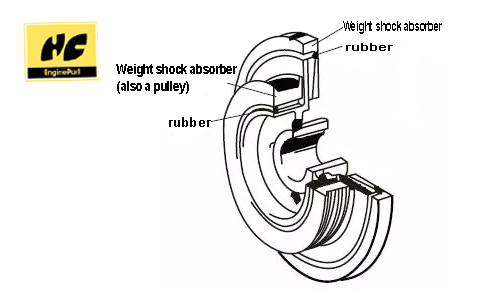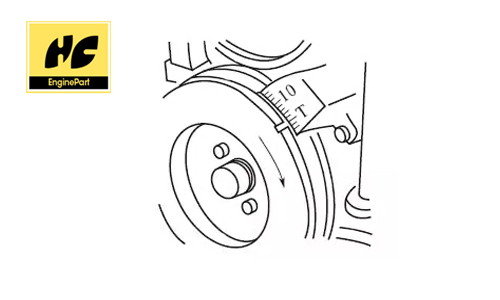Crankshaft pulley and torsional vibration damper
2020-03-19
Automobile engine crankshaft pulleys and torsional vibration dampers are mounted on the front end of the crankshaft. The former is used to drive accessories such as cooling water pumps, generators, and air-conditioning compressors, and the latter is used to reduce the torsional vibration of the crankshaft.
The crankshaft is actually a shaft with a certain elasticity and rotating weight, which is the reason for the torsional vibration of the crankshaft. During the operation of the engine, the magnitude and direction of the force transmitted to the crankshaft via the connecting rod constantly changes, so that the instantaneous angular velocity of the crankshaft also changes continuously. This will cause the crankshaft to rotate faster or slower relative to the flywheel, which will cause torsional vibration of the crankshaft. This kind of vibration is very harmful to the work of the engine, and once resonance occurs, it will aggravate the engine shake. Therefore, vibration reduction and damping measures must be taken. The most effective one is to install a torsional vibration damper at the front end of the crankshaft.
The most commonly used crankshaft torsional vibration dampers for automobile engines are frictional torsional vibration dampers, which can be divided into rubber type crankshaft torsional vibration dampers and silicone oil torsional vibration dampers. Commonly used are rubber-type crankshaft torsional vibration dampers, as shown below.

Rubber type crankshaft torsional vibration damper
At present, the crankshaft torsional vibration damper used in passenger car engines is generally not provided with an inertia disc alone. Instead, a crankshaft pulley is also used as the inertia disc. The pulley and the shock absorber are made into one body, which is called a vibration damping pulley.In order to ensure the rotation of the crankshaft and the timing of the valve train, usually, the crankshaft pulley has a crankshaft angle dial with a timing mark and an ignition advance angle.

Timing mark on the crankshaft pulley